Potsherds & Arrowheads
The rubble of an era.
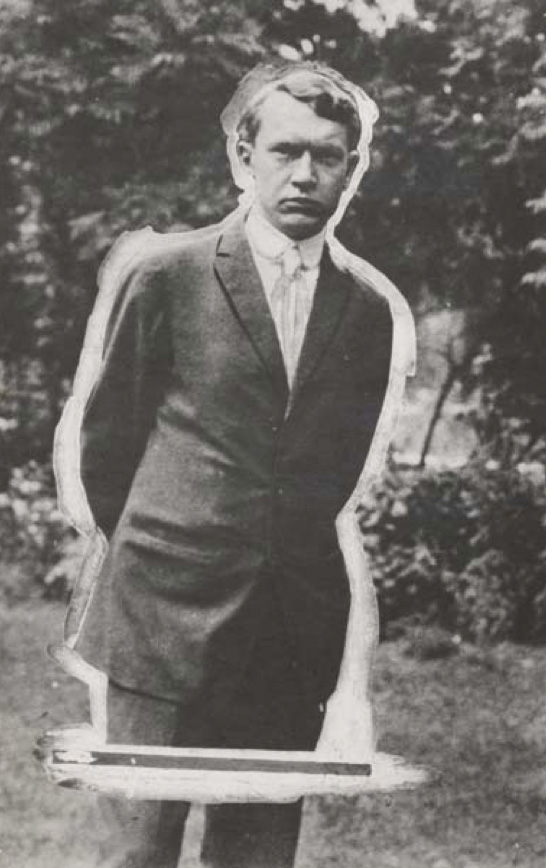
Vachel Lindsay, from the Poetry magazine archives
A year ago I proposed to the editor of this magazine that, in honor of its centennial, I do some archeological digging through Poetry’s first three decades. Joseph Parisi’s and Stephen Young’s Poetry Anthology 1912–2002 collects work first published here, but most of their selections are by known poets. I sought truly obscure yet glittering potsherds. Armed with tissues and eye drops and call slips, I entered the Dodd Research Center archive and opened the brittle Pegasus-fledged pages of 1912.
For several months I sifted. There were pleasures that could come only from reading poems in this context. Above the faintly floral-scented verses of the early years, regionalists like Carl Sandburg and Vachel Lindsay tower. (If you need a jolt of madcap kookiness, I suggest reciting aloud Lindsay’s “The Firemen’s Ball” from July 1914, in which “the ding-dong doom-bells” ring with a “Clangaranga, clangaranga/Clang, clang, clang” to imitate “the burning of a great building”) Then, if I did not already suspect that Pound’s early Cantos dropped from another planet, their extraterrestriality was confirmed by seeing them in situ in the June 1917 issue. And the shock of coming upon Louise Bogan or Langston Hughes or Weldon Kees amidst thirties period bric-a-brac—thrilling!
Yet so much was numbingly forgettable. Really, what keeps any poem from sinking into the midden? Obviously it’s not just formal facility. It’s heartbreaking to hear how much of the early detritus is tightly-rhymed verse: I could feel the hours that went into these finicky clockworks bearing down on me; I aged. Nor does a poet’s spurt of establishment fame keep her work alive. I was excited to see how many female Pulitzer-winners had published here. Sadly, the offerings by Leonora Speyer and Audrey Wurdemann and Marya Zaturenska are all fossils of the dustiest kind. A poet’s experimental stance is no insurance that his poems will speak to a later age. Oddballs like Harry Crosby, Emanuel Carnevali, and Alfred Kreymborg appeared in these pages, and while I loved the idea of salvaging one of their pieces—Carnevali’s serio-comic “His Majesty the Letter-Carrier,” say—its drollery didn’t quite carry the poem. Meanwhile, any number of forgotten Poetry house favorites over the years illustrate that being prolific is not the sole key to longevity.
Poetic fashion is fickle, of course. It was a surprise, then, that reading decades of back issues suggests that there is a sort of historical poetic justice; the epoch-making poems that first appeared here are still staggering. And other voices that have been recovered already—Lola Ridge, Genevieve Taggard, Elinor Wylie—don’t sound quite like anyone else in the magazine. That they’ve been sifted out of the strata is understandable. What rule of lasting does this suggest? Enough of the recovered poems (what is minimally “enough”? Five? Ten? Twenty?) sound distinctive enough (ditto uncertainty on quantifier) to make them register in the collective ear as a singular voice.
But what about the flints and chips left behind? The fugitive poems that never quite added up to “a voice”? In the April 1916 issue, Pound issued one of his cranktankerous edicts:
As for the sickly multitude pouring out mediocre and sub-mediocre work...in the first place, they don’t count, and, in the second place, if any among them do turn out a good scrap of work these scraps neutralize.
Pace E.P., I’m not ready to believe that there’s nothing worth salvaging from the scraps. Let me show you a handful of obsidian points that can still draw blood.
•
Here is a startling ballad variation from April 1915. This is twenty-one years before Abel Meeropol’s “Strange Fruit,” made famous by Billie Holiday:
Blackbird, blackbird in the cage,
There’s something wrong tonight.
Far off the sheriff’s footfall dies,
The minutes crawl like last year’s flies
Between the bars, and like an age
The hours are long tonight.The sky is like a heavy lid
Out here beyond the door tonight.
What’s that? A mutter down the street.
What’s that? The sound of yells and feet.
For what you didn’t do or did
You’ll pay the score tonight.
No use to reek with reddened sweat,
No use to whimper and to sweat.
They’ve got the rope; they’ve got the guns,
They’ve got the courage and the guns;
And that’s the reason why tonight
No use to ask them any more.
They’ll fire the answer through the door—
You’re out to die tonight.
There where the lonely cross-road lies,
There is no place to make replies;
But silence, inch by inch, is there,
And the right limb for a lynch is there;
And a lean daw waits for both your eyes,
Blackbird.
Perhaps you’ll meet again some place.
Look for the mask upon the face:
That’s the way you’ll know them there—
A white mask to hide the face.
And you can halt and show them there
The things that they are deaf to now,
And they can tell you what they meant—
To wash the blood with blood. But how
If you are innocent?
Blackbird singer, blackbird mute,
They choked the seed you might have found.
Out of a thorny field you go—
For you it may be better so—
And leave the sowers of the ground
To eat the harvest of the fruit,
Blackbird.
—“The Bird and the Tree”
Lynching: like jazz, an American invention. If you followed poetry between the wars, you might recognize this as an anthology piece by Ridgely Torrence, a bright light of the twenties. Today Torrence is remembered mainly as a playwright, editor, and friend of the more famous. His Three Plays for a Negro Theatre were a hit in 1917, where they were the first dramas to run on Broadway with all-black casts. Though their wince-inducing dialect and Christian moralizing date them, the plays are a serious attempt by a white author to represent the effects of violence on the black community. Meanwhile, as poetry editor of the New Republic from 1920–1933, Torrence championed emerging poets including Hart Crane, Wallace Stevens, and Elinor Wylie. His own 1925 collection, Hesperides, was lauded. But Torrence published no further poetry books until 1941; after that, only a volume reprinting much earlier work appeared. And though he was awarded the Shelley Memorial Award in 1942, by his death eight years later he had slipped into what The Dictionary of Literary Biography acknowledges “must charitably be called a minor position in American literature.”
Admiration for Torrence’s good citizenship doesn’t make it easier to slog through most of his writing today, sadly. But “The Bird and the Tree”? I left the archive haunted. The poem’s unsettling, irregular rhyme is accented by moments that seem hyper-modern. The abrupt, twice-recurring drop of “Blackbird” feels like the fall of a body. And the metaphor tying the black man who will swing from the tree with a bird that could fly to safety from its boughs is queasily ambiguous. Is this a redemptive image of freedom? I have no idea if Torrence ever witnessed a lynching; certainly even in his native Ohio, mobs were a threat. Photographs of hangings circulated widely in postcard form, as the Without Sanctuary project makes clear (withoutsanctuary.org.) I began to wonder if Torrence arrived at his blackbird image because of how a bound body looks from below, silhouetted against a cage of branches. (If that seems like a stretch, go look at the pictures.) As I read with this awful counter-image in mind, the poem’s resigned, too-cool, too-controlled voice began to sound like a whisper from the grave. This is a revenant speaker, knowing exactly what will happen because he has seen it all before.
•
Race is also an issue in the work of an English poet using the pen name “Cecil John,” who published thirty-four poems here between October 1922 and March 1932. The editor’s notes on his entries are intriguingly sparse:
[John] seems to have been attached...to the colonial service in Central Africa. His first poems...were extensively copied, and later groups increased his reputation as the voice of a minority in Africa who resent the advance of civilization and the white man’s treatment of the natives. His name and residence are unknown to the editors.
John’s narratives are packed with local detail and the jaded voice of the old Africa hand. They’d be a treasure trove for scholars studying the last gasp of colonial writing from the continent.
Conradian unease at empire dominates John’s writing. His poem “In Africa” urges
Be glad, Africa, for that sun
Which strikes the white man down—
The white man with his sample bag,
His railroad, his tin town,
since without disease and heat, the continent would be overrun. There are no illusions here about the nobility of British expansion. And while John is impressed by the Africans’ frankness toward sex, he’s blunt about the difficulties attendant on mixed race children. In “The First-Born,” his speaker runs into a native woman with whom he’s passed a night. After some grandiose expostulation about how an Englishman’s first son is the “heir of all his race, his dream made manifest,” the speaker sees the woman’s child. Manifest destiny dreams have gone awry, for here is the “café au lait” baby. “That’s my first-born!” the speaker flatly acknowledges. Another poem, “The Doctor,” depicts a man who is a respected member of the colonial post, although “a negress keeps his house,/And those mulatto youngsters in white suits/Are something puzzling on his hands.” This wasn’t the sort of souvenir you could take back to England in 1926. Instead, the doctor “shut himself away,/And drank himself, not quite, to death.”
Why are John’s characters off toting White Man’s Burden in the first place? Heartbreak, of course. Going through a dead man’s effects in a poem called “The Old-Timer,” the speaker finds clothes, kudu hides, guns, and then, “wrapped in a torn linen, almost clean,/Of all fool things—a white-lace, spangled fan.” Noting that women “haven’t used those now for thirty years,” the speaker realizes that the dead man “must have trekked it round the hemispheres!” And in some poems, like “Finis,” John seems to exorcise a specific romance:
You bade me “understand” and “wait,”
You bade me not forget the past.
In brutal English I may state
You mean—when he is dead at last
(His liver’s bad, I understand)
And you have mourned in fitting black,
And the world’s pacified and bland
Your girlhood’s lover may come back.
Imagine a progressive, bitter Kipling, and you get the idea.
John’s poems run long and don’t quite earn the space needed to reprint them here, though one from March 1932 is worth presenting in its entirety. It encapsulates John’s cynicism and typical setting, and it goes down like a little quinine pill for those suffering passion’s fevers:
Try six months flat upon your back
Ripped with a rotten festering wound;
A cot, unyielding as a rack;
A blanket stiff with blood and black
With dirt; try the incessant sound
Of beating drums and jigging feet;
Try goat’s milk in a dung-lined pot
And morsels of charred monkey-meat;
Try village smells; try flies; try heat
And manioc roots grown green with rot.
Then, when you totter to the sun,
You’ll waste no sighs on hearts undone!
—“The Love Cure”
I assume that the poet’s pen name is a sardonic jab at De Beers mogul and supreme colonist, Cecil John Rhodes. Rhodes died in 1902. In his will he asserted that the British “are the first race in the world.... If there be a God, I think that what He would like me to do is to paint as much of the map of Africa British Red as possible.” The poet “Cecil John,” whoever he was, had a different view of the map.
•
From a review of a first book, circa 1938:
Being a woman and a mother, as well as a chemist and star-gazer, [the author] makes a unique mixture of her poetry. . . . [But the book’s middle section about a child has] at best a limited interest as poetry or even as record; this is even truer of the following section, which isthat sort of poetry most amazing and distasteful to men.
Here is one of those amazing and distasteful poems, first published in the November 1935 issue:
i
For this
The body was knit,
The thigh bones riveted
Deep in the side;
Dark roadways of all love
Converged to this,
Passion and kiss
Bride-bed and death;
So to bequeath
Bone upon bone
The skeleton.
ii
Now you may go
Empty of import; you
With lustral service done.
Nor moon, nor sun,
Concerns itself again
With your
Bright lips and hands,
Breast-bone and thigh.
What circumstance and height you bore
Is yours no more;
Now go
Anonymous as snow,
Empty of import; go.
—“Genetrix,” by Kathryn Worth
Worth published nearly a score of poems here during the thirties. Her Signs of Capricornus (Knopf, 1937) was reviewed favorably in these pages by Janet Lewis. (The piece quoted above, by John Holmes, appeared in vqr.) Today’s reader can only be amazed by Holmes’s squeamishness; this poem is about as physical as Worth ever gets. What she does get is metaphysical. Like Bogan’s, Worth’s poems have a tight seventeenth-century snap. She’s often religious in ways interesting to the non-believer; she offers few platitudes. Rather, her maternal poems present the existential drama of giving birth to a creature that must in its turn suffer and die. While her weaker pieces wear their Donne and Herbert galligaskins too obviously, I find Worth’s bleak directive to maternal flesh in “Genetrix” striking. The speaker doesn’t balk at the mechanistic notion that a particular body, having reproduced, has served the species’ purpose. Countless generations have led to this birth. Bone upon bone the babe has solidified inside its mother’s own skeleton. Bequeathed here is the infant’s mortality along with its life. And mother, that singular woman, is now empty, without consequence and void of living cargo. Womb to tomb has rarely been so sternly etched.
Worth was in her late thirties when this poem appeared. She had one daughter. It’s easy to imagine her hammering these tight stanzas out of the pronouncements a woman of her era might fear as her fertility ebbed and her beauty began to fade. Yet the poem insists that its subject has something larger than singular passion and circumstance. While its lines dismiss her individuality, its Latin title bestows archetypal power. Like Venus Genetrix, she’s incorporated into an ancient lineage and in turn becomes its embodier. Via birth—and this poem about birth—Worth makes herself primal maker.
We have the term “elegy” for poems of mourning, yet we still have no generic name for those that represent childbearing. The Academy of American Poets website states that poems dealing with reproduction are “about creation, or beginning, or nurturing, or innocence,” but that’s hardly descriptive of Worth’s work. Despite pioneers like Rukeyser and Ostriker and Rich, as well as the recent anthology Not for Mothers Only and collectives such as vida, we’re still a long way from what Peter Sacks and Jahan Ramazani have done to illuminate the elegiac tradition. Maybe it’s finally time to christen the genre and anatomize its history and tropes? We’re gifted with a luxury of younger writers who have taken the mommy poem to wild, thorny places: Beth Ann Fennelly, Danielle Pafunda, and Rachel Zucker come immediately to mind. Worth’s “Genetrix” is a memorable earlier expression of this yet-to-be historicized genre’s darker roadways.
•
When we tire of poking pins in our Alan Greenspan voodoo dolls, when our hopes are dulled by systemic greed and inept leadership and growing environmental catastrophe, it’s tonic to look back at the late thirties. They had the Dust Bowl; we’ve got the 2011 Global Food Crisis. They had the Munich Pact; we have Obama’s re-signed Patriot Act. And if some better recent American poetry is what we might broadly define as “socially engaged,” it’s certainly true that long-simmering tensions throughout the thirties produced key works from writers across the political spectrum. It’s not surprising, then, that several sharper poems from the archive appear in 1939, even before German troops invaded Poland that September.
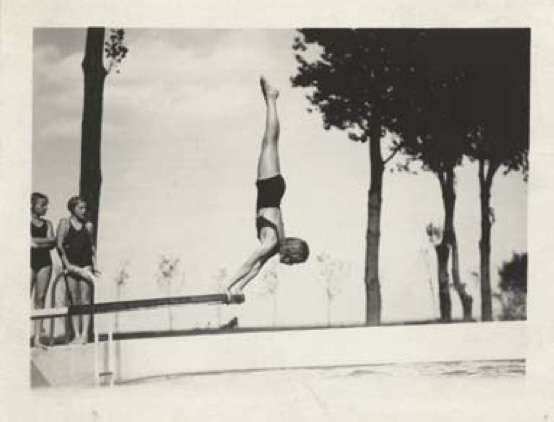
Joan Mitchell, August 1935
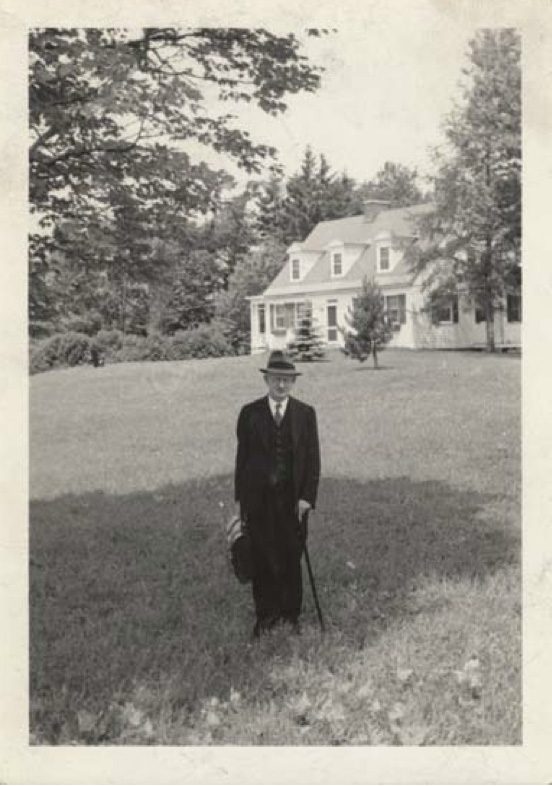
Alfred Kreymborg
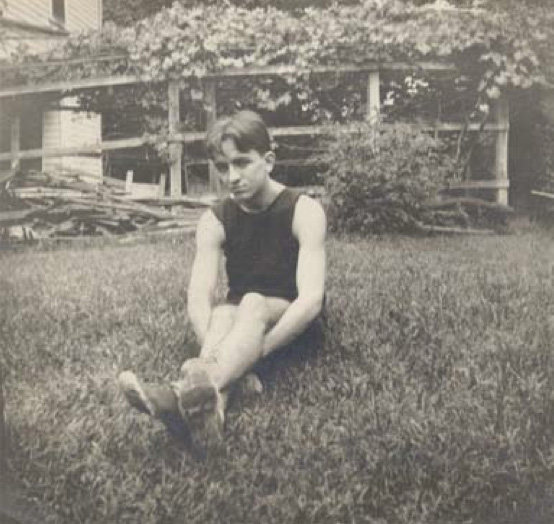
Emanuel Carnevali, “Feb. 1918 — sent by Louis Grudin”
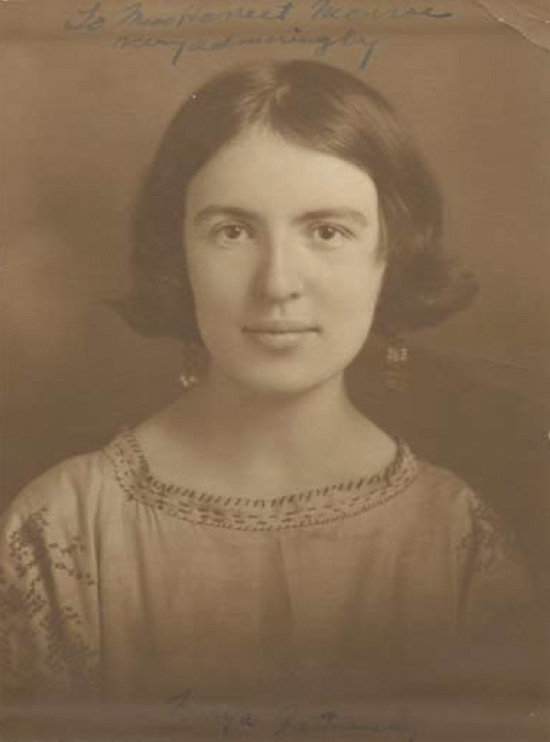
“To Miss Harriet Monroe very admiringly—Marya Zarturenska”
Among the most rhetorically ambitious is “Yesterday, to Us,” from May 1939. Harold Rosenberg, its author, will be familiar to many as a Himalaya of mid-twentieth-century art criticism. His essay “American Action Painters” appeared in Art News in 1952 and became a defining text of Abstract Expressionism. Through the thirties, Rosenberg’s early attachment to Marxism had dimmed as his aesthetic stance distanced him from doctrinaire colleagues in the wpa Federal Arts Project. By the time he published his canonical essay, he could praise the canvas as an “arena” and painting as an epic “event” in which a solitary maker struggles with his materials and himself. But in 1939, Rosenberg still seems to be railing against the failure of articulate collective response:
With dignity of gongs
towards a vanishing-
point of flags
the political prisoner
is led—Yesterday to
us, unquiet priests of silence, the
hypnotic
doze of power was aquality of atmosphere
peculiar to
tides columns
seals and famous
boulevards; and the common-
place (without gongs) the only
but not the
reality. The remoteness
of life is usurped now.
The distracted odds and
ends of high
authority have put braid and
uniforms on all the
corner-boys; and the decadent,
the guy who
tried to make the waitress,
had cats and velvet in
his bedroom, he rules now
in stadia
and public squares. And where that happens
the Aristotelians
hold foot-races with the
Platonists
and other connoisseurs
of naves and holy thought
to mop the vomit from
the super-
intellectual shirt. Thus
power and gongs, become
the sole reality, lead us
prisoner
between the flags...Oh now
silence comes to us no
more with blooms and carvèd
seas. It brings
no smiling inhalations of
deep music, no crystal
joy. No. It holds terror clawing
at the cables
of man’s uneven rise; it
whizzes in our ears
like a jungle taut with
shiverings;
it is dense with unbelievable
cries...We have therefore gone
out to stand watch on the crossings
yesterday
so commonplace and strange.
“About the effects of large issues upon their emotions, Americans tend to be either reticent or unconscious. The French artist thinks of himself as a battleground of history; here one hears only of private Dark Nights,” wrote Rosenberg in 1952. This frustration girds the poem. What can the isolated priests of silence do now that power no longer dozes in nature, history, or symbol, but wakes in the hands of hooligans and creeps? When philosophy and theology run to serve intellectual posers? Finally the collective “we” bands together to keep watch . . . but it’s too late. The nuances of political chagrin are hard to voice. Rosenberg creates a linguistic Möbius strip along which the reader moves from witnessing a distant execution into becoming the political prisoner, enacting the maxim that one can’t escape history. The poem’s method is so unlike anything else in the magazine during these years that it jumps off the page.
Rosenberg released one book of poetry, Trance Above the Streets (Gotham Bookmart Press, 1942). In an unpublished preface, William Carlos Williams contextualized its prosody, arguing that a poet’s job
is to make the line fit the language...and to discover there the new structural integer . . . forged under the hammering of contemporary necessity. . . . [Rosenberg’s] broken line, I begin to think, is the most a poet can do with the exigencies which bedevil him today.
Ultimately Williams didn’t finish the introduction; Rosenberg’s abstractions and unthingy ideas seem to have alienated him. Today, though, after Language and Procedural and Disjunctive poetries have canonized the super-intellectual, the poem reads like its own relatively coherent arena of action. Its jangly rhythms discomfit; each staggery octave collapses on us just as we figure out where we are. It’s a political poem of its moment that may actually be more resonant for post-avant readers.
•
A few years earlier, a New York poet named Beatrice Goldsmith debuted in Trial Balances, the 1935 anthology of emerging writers made famous in retrospect for its inclusion of Elizabeth Bishop. Introducing Goldsmith, Babette Deutsch critiqued her juvenilia as coming from “the heart unlearned in loss”; she seemed to be “looking out of a strangely sheltered nook.” As a corrective, Deutsche advised the young writer to “strike roots into deeper soil.”
The end of the decade gave Goldsmith a rock to sink her roots around. Germany annexed Austria in March 1938. November brought Kristallnacht, followed by Hitler’s January 1939 Reichstag speech threatening the annihilation of Europe’s Jews. By the time Goldsmith published this poem in the June 1939 issue, it was clear that the situation was perilous:
Under the bed the shoes
Wait for the morning. Heat
Curls the newspapers and bends
The midnight street, the moon
Burns, the stone
Library lions sit and sweat
Falls from their sculptured eyes.Together they lie
Upon the empty pillow, arms
Unlaced by heat but hair
Mingling like moss together.
Uneasily
He turns. They have sewn up his heart
By flashlight, there is pain, he will convalesce
In a garden bounded by bombs. A neon
Newspaper takes fire before his eyes, the words
Grow red and ghastly JEW His mind
Is raked with light He cries,
There is a blowtorch in his head, his bones
Begin to burn, the cannibals
Dismember him.
Aware—
He cannot wake, under the sleeping lid
The eye grows great and glazed
He calls,
He finds her lying dead
Upon a park bench (yellow, marked for Jews)
It’s Union Square he says, but she is dead
The stars fall hot as ashes and he cries
With shut and slumbering eyes.
She feels
No danger. Thirst
Sleeps on her face, she dreams
Of snow, her mouth
Is full of snow her tongue
Is spiced with frost she walks
In a gown of leaf-green glass
(With a blue bolero) smoking
An icy cigarette. Somnambulant
She walks her hands
Colder than milk. She smiles
And tilts her cellophane umbrella
O this snow!
It fills and girdles the still moon
And sleeps in the armpits of trees
this snow
Drops cool as butterflies
Upon her lips and eyes.
Undone
By dreams they lie, the heat
Prisons their arms, the milk
Sours on the sill. Distraught
He turns and cannot wake. She
Smiles. But from the street
There comes the midnight speech
Of feet, and where the tower stands
Electric over the square the clock
moves incandescent hands.
—“Nocturne”
The contemporary reader shudders at this poem’s foresight. Those heat-wave-turned-holocaust images are shockingly, weirdly prescient. Finding the poem in a 1939 issue gave me a sense of temporal disjunction; it was like waking in D.M. Thomas’s White Hotel to find that a past trauma actually presages the future.
Like “Yesterday, To Us,” “Nocturne” closes with an image of awful expectancy. But unlike Rosenberg, Goldsmith has clear activist intent. This poem wants to terrify us into alertness. It’s melodramatic in the textbook literary sense. That is, pathos, moral polarization, and sensationalism come together to perform what Peter Brooks calls “an intense emotional and ethical drama based on the manichaeistic struggle of good and evil.” Like classic melodrama, “Nocturne” works to galvanize readers against a perceived wrong. Today, Nazis in New York may seem like material for a dystopic Roth novel. But anyone paying attention in 1938 while Roosevelt and thirty other world leaders at the Evian conference failed to develop a viable plan to receive the expected flood of Jewish refugees might well have felt there was no safe harbor anywhere. Stars hot as ashes could fall on Union Square.
Do we always dislike poetry that has too palpable a design on us? Is there a place for propaganda in a poem? (Isn’t every poem a manifesto for its own aesthetic?) I’ve recovered “Nocturne,” so clearly I think it’s worth saving. Its most sensational passages are balanced by formal effects: the breathless line break-deferred verbs and unpunctuated fluidity of the middle stanzas; the image of the beloved with her deathly glass dress and ice cigarette; the unpredictable rhymes that freeze in the last strophe into a concussive sequence.
After the bombing of Pearl Harbor, Goldsmith turned to activist songwriting for children. Her Win-the-War Ballads, accompanied by Sam Morgenstern’s music, appeared in 1942. With titles like “Blackout” and “My Ration Book,” the songs became part of the wartime didactic arsenal. Children across country had their spirits bolstered with choruses such as “A bomb can make an awful noise/And raise a lot of fuss/But here in school we won’t be scared,/If one should fall near us.” The World Grows Smaller (Grenich Printing Corp., 1953), a bilingual Yiddish-English collection published after Goldsmith’s early death, includes “Nocturne” and the Trial Balance poems, but suggests that the poet spent the post-war years writing for young readers. (It makes perfect sense to me that, after learning how predictive “Nocturne” actually was, an author might seek respite in a world of friendly animals and gentle foreign children.)
•
Even poems from 1939 that eschew experimental prosody and overtly political content seem to be holding their breath. Here’s one from the January issue that, in its formal regularity, lies at the other end of the spectrum from Rosenberg and Goldsmith:
The mouths of cannon turn a silent “O”
Up to this miracle of snow.Our hands are idle, our commander mute,
The trigger is not cocked to shoot.
This manifesto that no man can make,
This lazy flake on falling flake
Withholds our orders and the cannon’s speech:
The snow smokes on the pin and breech.
—“Snow,” by Marion Strobel
Like cherubim in a Renaissance nativity, those awe-stricken cannon. Yet the metal is hot enough to make snowflakes smoke. It will not be cool for long, no matter how delicately the moment balances in its couplets.
Strobel served for many years as Poetry’s associate editor under Harriet Monroe, through the transition after Monroe’s death in 1936, and into the war years, where she stepped in as co-editor after George Dillon was called up. A new biography of Strobel’s daughter, painter Joan Mitchell, details how Strobel’s fund-raising efforts helped keep the magazine afloat during its penurious stretches. Strobel’s own poems appeared here regularly (and Mitchell’s once). She was one of the writers Monroe surveyed in her “A Few Women Poets” comment in September 1925, alongside Bogan, Wylie, Taggard, and Ridge. After reading Monroe’s praise of her as a “modern young woman [with]...a technique audaciously personal,” I grew optimistic whenever I saw Strobel’s name in the table of contents. Alas, most of her wistful verses melt into the period’s white noise. In her criticism, too, Strobel was largely resistant to innovation. For a symposium published here in January 1922, for example, she remarked that Marianne Moore’s work is “inevitably dry; the manner of expression pedantic. She shouts at our stupidity. . . . and we yawn back at Miss Moore’s omniscience.”
Still, “Snow” caught my ear and I kept returning to it. It’s illustrative of how effective heterometric lines in a closely-rhymed poem can be. Think about sitting in an archive for days . . . weeks . . . months, chipping through nine thousand or so pages of metrically regular verse. Till then, I’d never actually felt in my own anvil bone what Pound was getting at in his invective against the metronome. Glib glassy iamb after iamb...I began to wonder why anyone ever wrote poems, or why I thought I liked to read them, or what sort of moron I was to suggest sifting through this stuff in the first place. Then I’d come across a piece willing to use irregularity as a sonic device, and blood would start to flow back into my cochlea. “Snow” is the most conventional poem here, yet Strobel’s simple tactic of shortening each second line to a tetrameter undercuts her couplets. That image of snow on hot metal closes the poem with a mood of unsettling calm largely because of the downshift to the tighter line.
Strobel has crafted this poem to feel timeless. Along with the traditional form, she’s withheld any identifying details. Is this the weather-stalled Battle of Tereul in 1937? Or the 1916 Siege of Verdun, postponed for nine days due to a blizzard? It could be a lull in any northern conflict during the last century. Ironically, then, it’s the poem’s year of publication that gives it much of its pathos now. Readers know what’s going to come soon after this; that extra-textual information shapes our reception. The effect is like viewing an August Sander photo without noting its caption, and only afterwards seeing the descriptive text. Sander’s well-known trio of young dandies on a country road, for instance, is first a delicious study in character. But once we read that it’s a picture of “Three Farmers on the Way to a Dance, Westerwald, 1914,” everything changes. The same thing happens when we attach “1939” to Strobel’s poem. Stasis moves into something wrenchingly temporal.
•
“Recovery” is our moment’s trendiest word. Economically, environmentally, politically, culturally, we all seem steeped in the rhetoric of regaining something. It’s a nostalgic impulse, this feeling that looking backwards will prepare us for the future. With luck, poetic recovery might unearth a Mina Loy or a Lorine Niedecker in whose overlooked voice we now hear prophesy. But the dirty truth is that anyone engaged in recovery work will bring something to light; you’re not going to spend three months digging and return empty handed. This imperative drives countless works of forgettable scholarship and, on hair-pullingly fruitless days, made me consider fabricating my own Rowley poems.
In the end, I was happy to uncover the handful here. Admittedly, I’m surprised by how topical some of these pieces are: subject isn’t usually what keeps me coming back to a poem, and I’m suspicious of “message.” Nonetheless, after reading through thirty years of poems mostly constructed from a limited thematic template (I love you and spring rain is fresh on the grass/flowers/trees; I’m lonely as the autumn leaves are falling/wind is sighing/moon is setting; life is short as a breaking wave/a bird’s flight/the echo of a distant bell), any work that spoke to the day’s difficult issues grabbed my notice.
Yes, the depressing part is handling the bits and shreds, then shoveling almost all of them back into the midden. A poet reading through archival work is bound to obsess: Are my poems the rubble of my era? Every page illustrates how nearly impossible it is to make something that’s not simply your age’s typical flaked point. Recent studies of Neanderthal dna show how closely modern humans are related to the kin we appear to have exterminated, and scientists speculate about what gave us the edge. Neanderthals were terrific tool makers. Their limitation seems to have been that they spent tens of thousands of years making the same great tool over and over.
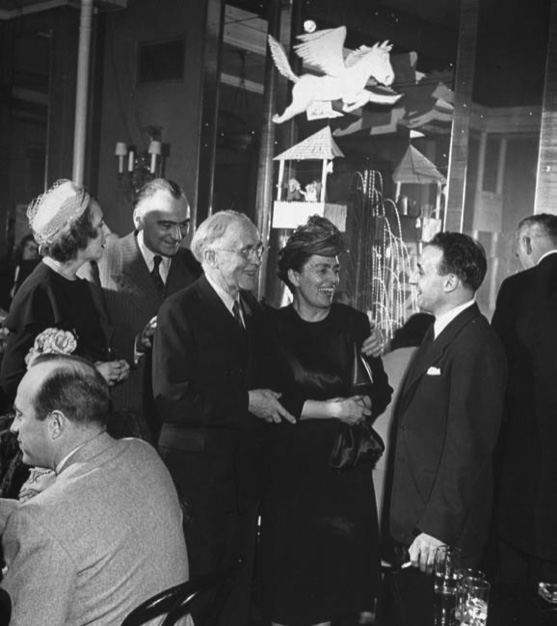
Associate editor Marion Strobel at a “Pegasus Party,” January 1, 1947
V. Penelope Pelizzon is the author of the poetry collections Whose Flesh Is Flame, Whose Bone Is Time (2014) and Nostos (2000), which won the Poetry Society of America’s Norma Farber First Book Award and the Hollis Summers Prize. She is also the co-author of Tabloid, Inc: Crimes, Newspapers, Narratives (2010). Pelizzon’s awards include a 2012 Amy Lowell Traveling Scholarship, the 2012 Center for Book...


